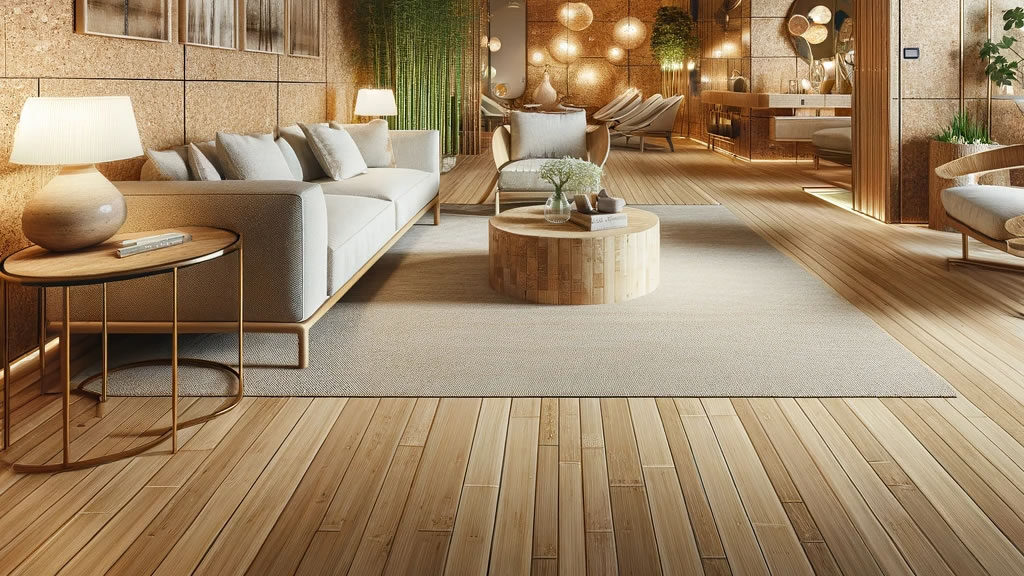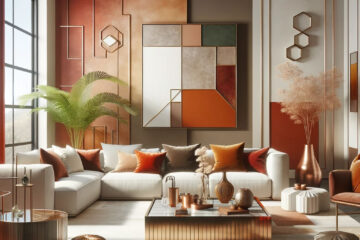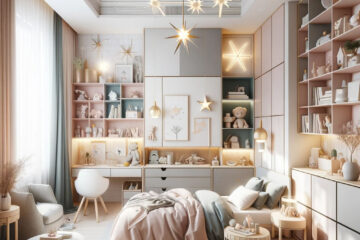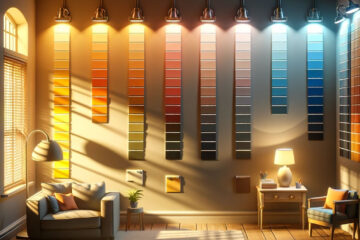The movement towards sustainable decoration is not just a trend; it’s a necessary shift in response to environmental concerns.
As we become more aware of our ecological footprint, the interior design industry is seeing a growing demand for eco-friendly practices.
Sustainable decoration involves using materials that are either recycled, upcycled, or sustainably sourced, reducing waste and minimizing environmental impact.
This approach not only benefits the planet but also brings a unique aesthetic and story to interior spaces.
Table of Contents

Eco-Friendly Materials
Start by exploring materials that have a lower environmental impact.
This includes reclaimed wood, recycled glass, and metals, as well as natural fibers like bamboo and cork. These materials not only reduce waste but also add character and warmth to any space.
Creative Reuse
Look at existing items with a new perspective. An old door can become a table, or a pallet can be transformed into a chic headboard.
This approach not only saves items from landfills but also adds a personal touch to your decor.
Energy Efficiency
Sustainable decoration also involves considering the energy efficiency of your space. Use LED lighting, eco-friendly paint, and energy-efficient appliances to reduce your carbon footprint.
By embracing sustainable decoration, you’re not just designing a space; you’re making a statement about your commitment to the environment.
Innovative Use of Recycled Materials in Interior Design
The innovative use of recycled materials in interior design is a testament to the creativity and resourcefulness of modern designers.
As highlighted in the ArchDaily article, these materials are not only environmentally friendly but also add unique character and history to interior spaces.
From reclaimed wood beams to repurposed industrial fixtures, the possibilities are endless.
Reclaimed Wood
One of the most popular recycled materials, reclaimed wood can be used for flooring, wall cladding, or furniture. Its weathered look brings warmth and rustic charm to any space.
Industrial Elements
Repurposing industrial elements like metal pipes, gears, and fixtures can create a chic, urban aesthetic. These materials often have a raw, unfinished look that adds an edgy contrast to modern interiors.
Glass and Metal
Recycled glass and metal can be transformed into stunning decorative pieces or functional elements like countertops and backsplashes. These materials offer a sleek, contemporary feel while being eco-friendly.
Incorporating these recycled materials into interior design not only reduces waste but also provides a unique opportunity to tell a story through decor.
It’s about celebrating the past life of materials and giving them a new purpose.
Sustainable Materials for Luxury Interior Design

Sustainable materials are not just about being eco-friendly; they can also bring a touch of luxury and elegance to interior design.
As discussed in the Interior Style Hunter article, materials like bamboo, cork, and recycled glass are not only sustainable but also have a high aesthetic appeal, making them suitable for luxury interiors.
Bamboo
Known for its durability and versatility, bamboo can be used in various forms, from flooring to furniture. Its sleek appearance and smooth texture lend a modern and luxurious feel to any space.
Cork
Cork is not only sustainable but also provides a unique texture and warmth. It can be used for wall coverings, flooring, and even as an accent material in furniture, adding a sophisticated touch.
Recycled Glass
Recycled glass can be transformed into elegant countertops, backsplashes, or decorative elements. It offers a contemporary look with its shimmering surface and can be found in various colors and finishes.
Incorporating these materials into luxury interior design demonstrates that sustainability and elegance can coexist.
These materials provide an opportunity to create stunning interiors that are both environmentally responsible and visually impressive.
Cross-Disciplinary Sustainability: Lessons from Fashion

The concept of sustainability transcends boundaries, and the fashion industry offers valuable lessons that can be applied to interior decoration.
Drawing from the Techpacker article, we see how principles of sustainability in fashion, such as recycling and reuse, can inspire innovative decoration ideas.
The crossover between these disciplines highlights the universal importance of sustainable practices.
Textile Reuse
Fashion’s approach to recycling textiles can be mirrored in decoration.
Fabrics from old clothing or linens can be repurposed into curtains, cushion covers, or upholstery, adding both style and a story to your space.
Sustainable Accessories
Fashion’s focus on sustainable accessories can translate into selecting decor items made from recycled or eco-friendly materials.
This could include items like rugs made from recycled plastics or decorative pieces crafted from upcycled materials.
Design Philosophy
The fashion industry’s emphasis on longevity and timeless design can be applied to decoration.
Choosing classic, durable pieces for your home ensures they remain stylish and functional for years, reducing the need for frequent replacements.
By adopting these cross-disciplinary sustainability lessons, we can create stylish and eco-friendly spaces that reflect a conscious approach to design, mirroring the evolving trends in fashion.
Practical Tips for Implementing Sustainable Decoration
Implementing sustainable decoration in your home or office doesn’t have to be a daunting task.
With a few practical tips, you can easily incorporate eco-friendly practices into your decor, contributing to a healthier environment while creating a stylish space.
Start Small
Begin with small changes. Swap out conventional light bulbs for LED ones, use eco-friendly paint, or introduce indoor plants to improve air quality.
These small steps can have a significant impact over time.
Shop Secondhand
Look for furniture and decor items at thrift stores, flea markets, or online marketplaces. Buying secondhand not only reduces waste but also adds unique and vintage charm to your space.
DIY Projects
Embrace do-it-yourself projects. Upcycling old furniture or creating your own decor pieces can be a fun and rewarding way to personalize your space while being sustainable.
Support Eco-Friendly Brands
When purchasing new items, opt for brands that prioritize sustainability in their materials and manufacturing processes.
This supports businesses that are making a positive environmental impact.
Educate Yourself
Stay informed about sustainable materials and practices. Understanding the lifecycle and environmental impact of the products you bring into your home can help you make more conscious choices.
By following these tips, you can gradually transform your space into a more sustainable environment, proving that style and eco-friendliness can go hand in hand.
Front Questions for the Article
How Can I Decorate Sustainably Without Compromising on Style?
Discover how to blend eco-friendly practices with stylish design for a sustainable yet chic living space.
What Are Some Creative Ways to Use Recycled Materials in Decor?
Explore innovative ideas for incorporating recycled materials into your interior design, adding character and uniqueness.
Can Luxury and Sustainability Coexist in Interior Design?
Learn how sustainable materials like bamboo, cork, and recycled glass can elevate your decor to a luxurious yet eco-conscious level.
What Can Interior Design Learn from Sustainable Fashion?
Find out how principles from sustainable fashion can inspire eco-friendly and stylish decoration choices.
What Are Practical Steps to Start Decorating Sustainably?
Get actionable tips on how to begin your journey towards sustainable decoration, from small changes to major design choices.



